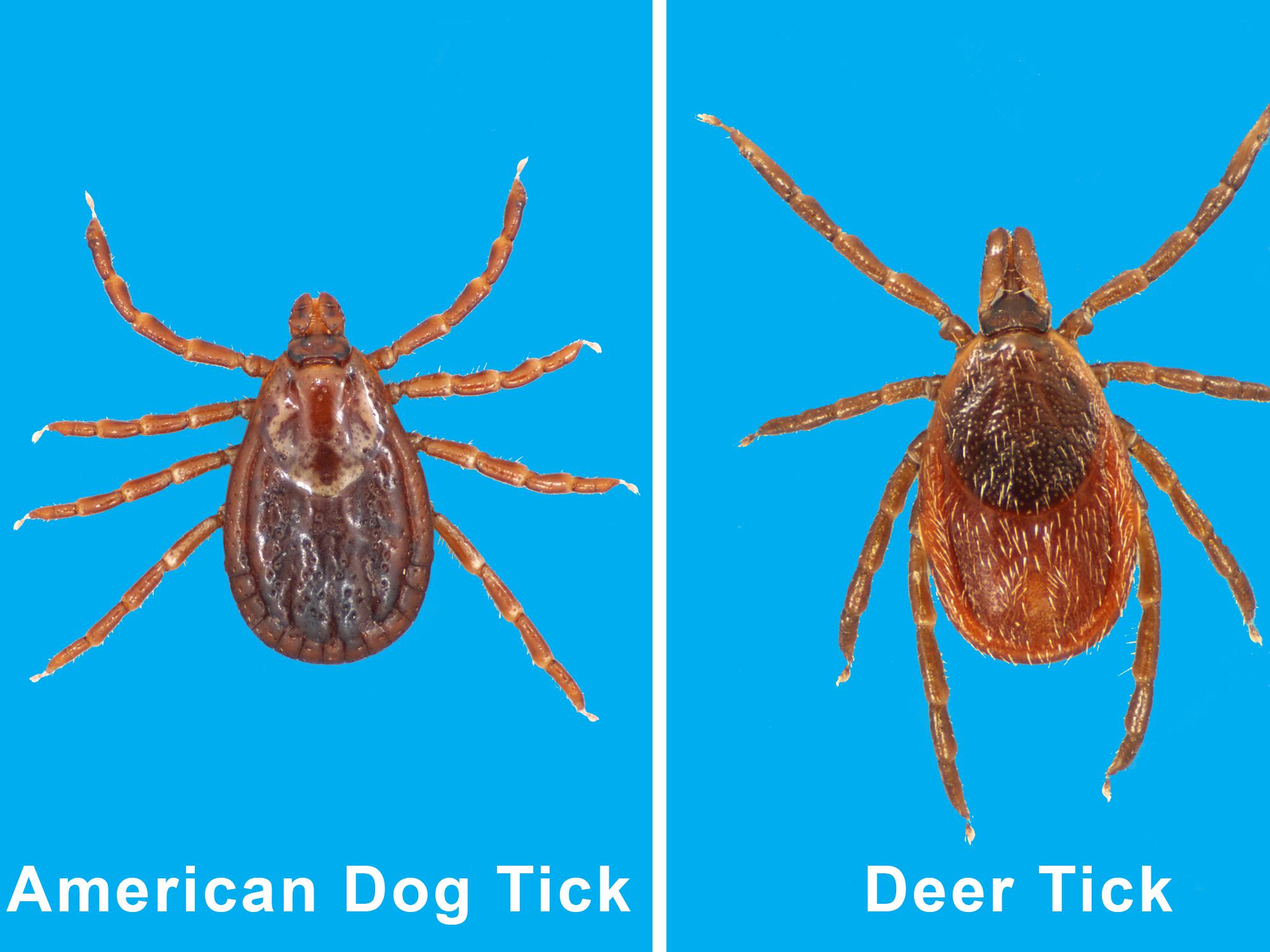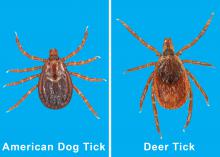Information Possibly Outdated
The information presented on this page was originally released on June 9, 2017. It may not be outdated, but please search our site for more current information. If you plan to quote or reference this information in a publication, please check with the Extension specialist or author before proceeding.
Observe precautions in tick environments
STARKVILLE, Miss. -- While hunting, working in the yard or garden, taking early morning walks or hikes, or just cruising around the property on all-terrain vehicles, people are likely to pick up ticks in some fashion.
Ticks are typically found in areas of dense vegetation and along game or human trails. Contrary to popular belief, they do not typically live in trees.
Mississippi is home to about 19 tick species, but five of them are the most frequently encountered: the deer tick, lone star tick, Gulf Coast tick, American dog tick and brown dog tick. The brown dog tick does not typically host/feed on humans and is not to be confused with the American dog tick.
Larval ticks, known as seed ticks, are of particular concern because they are the most likely to harbor disease and are so small that they are sometimes barely visible to the naked eye. They usually come in large numbers, so if you find one or two on you, then there is a good chance there are more. It’s not unusual for people to have 100 or more seed ticks on them. Those kind of numbers will drastically increase your chances of contracting a tick-borne illness.
Among the illnesses and diseases transmitted by ticks, the most common are ehrlichiosis, anaplasmosis, tularemia, tick paralysis, Lyme disease and Rocky Mountain spotted fever. Additionally, a recently discovered tick-related problem is the Alpha-gal allergy, which can make a person allergic to red meat from mammals. This allergy can last for years, which would be very inconvenient for most Mississippians.
Ticks are among the longest living insect-like species; some live for several years. So, treating your yard or property routinely each year is important if you want to spend less time with ticks.
To reduce your interaction with ticks, treat clothing as necessary with repellants such as permethrin when preparing to spend extended time outdoors. When outdoors, don’t wear baggy clothing. Loose-fitting clothes provides more surface area for ticks to attach onto, increasing your contact with the surrounding vegetation and making the pests harder to spot when they get on you.
Stop, check and groom yourself every so often, paying close attention to creased areas like your armpits and waistlines. Ticks like to feed in tight spots, which help them snuggle in and hold on. Tight spots also provide them protection from drying out, which is likely their biggest weakness. I find it helpful to stop in a sunny spot for about five minutes and stand as still as possible. This helps me feel ticks crawling around, allowing me to pin-point and remove them, instead of frantically searching all over.
Treat pets with prescribed antitick medication each spring via your local veterinarian. Check your pets routinely when they come indoors. Keep your yard or property well-manicured and clean of debris.
For more information on Mississippi ticks and diseases, review the Mississippi Agricultural and Forestry Experiment Station Bulletin 1150, “A Guide to the Ticks of Mississippi."
 [Editor’s Note: Extension Outdoors is a column authored by several different experts in the Mississippi State University Extension Service.]
[Editor’s Note: Extension Outdoors is a column authored by several different experts in the Mississippi State University Extension Service.]





